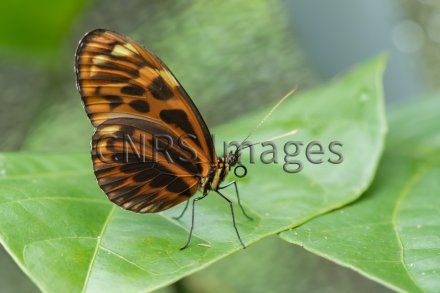Production year
2011

© Vincent PREMEL / CEFE / CNRS Images
20180048_0004
Papillon "Heliconius pardalinus" posé sur une feuille. Cette espèce de papillon possède un chromosome remanié empêchant les recombinaisons génétiques, qu'il a transmis à l'espèce "Heliconius numata" lors d'hybridations il y a 2 millions d'années. Depuis lors, chez "Heliconius numata", les deux formes chromosomiques (remaniée, et non remaniée) coexistent dans les populations, mais ne recombinent pas leurs gènes lors des croisements, ce qui explique la persistance de formes aux caractères bien distincts.
The use of media visible on the CNRS Images Platform can be granted on request. Any reproduction or representation is forbidden without prior authorization from CNRS Images (except for resources under Creative Commons license).
No modification of an image may be made without the prior consent of CNRS Images.
No use of an image for advertising purposes or distribution to a third party may be made without the prior agreement of CNRS Images.
For more information, please consult our general conditions
2011
Our work is guided by the way scientists question the world around them and we translate their research into images to help people to understand the world better and to awaken their curiosity and wonderment.